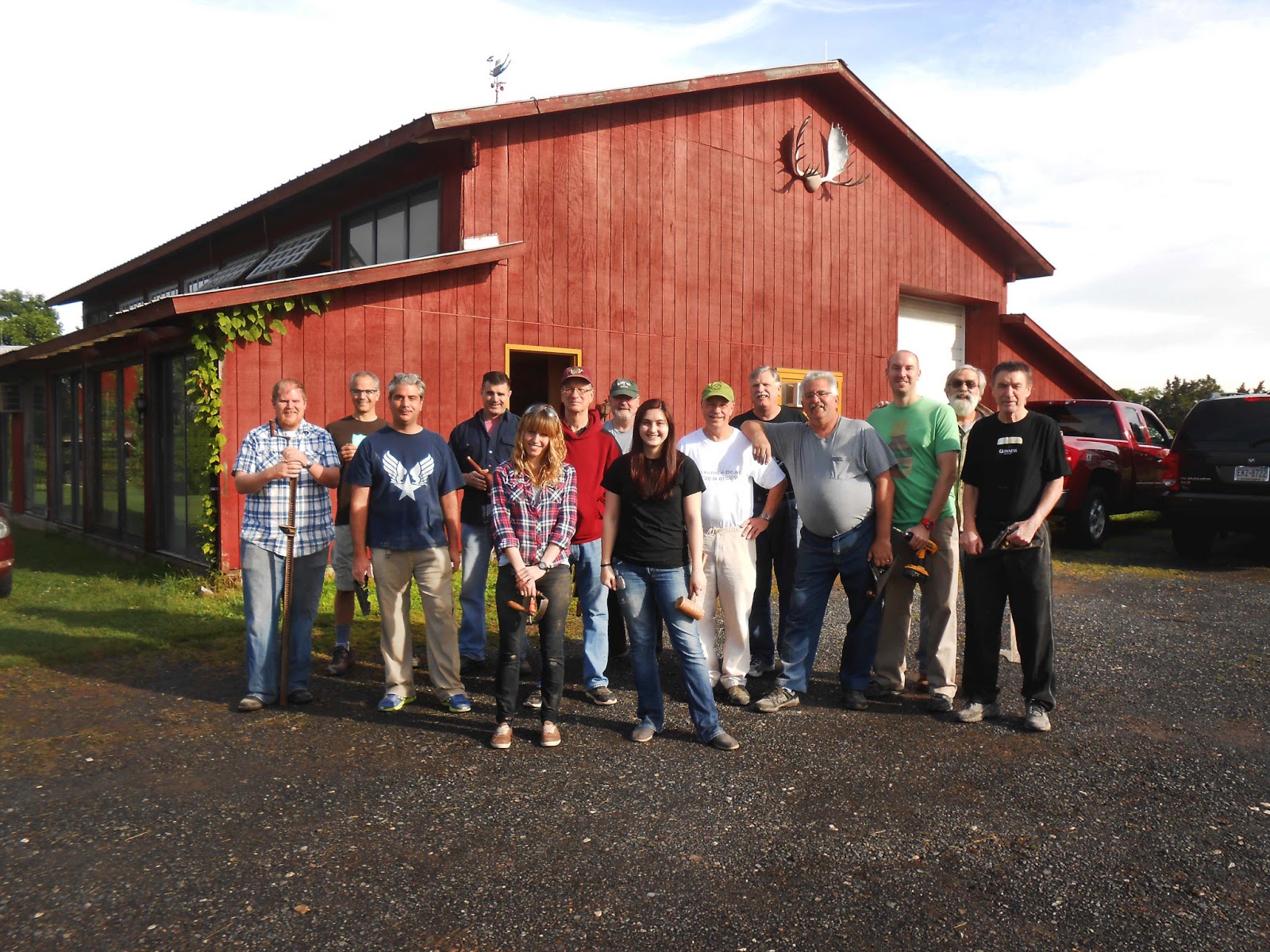'Enough is enough, woodworking apprentice, we are constantly reading about this Zelli Bar and all the progress being done but, when will it really be done?' Don't worry, folks, it's finished!
As readers, you have seen this project from the beginning stages (when I first learned to draw to scale) all the way through the finishing processes and the day has finally arrived that it has been assembled, photographed, packed up, and delivered to it's home.
Because this was my first time being part of a commissioned furniture project from start to finish here at the shop, it was also the first time I've taken part in a pieces' formal documentation. New pieces get photographed and added to the Lohr Woodworking portfolio. I was more than excited to be a part of this process as much as I was about every process along the way. Set up in the back/lumber room, we hung up a slew of flood lighting and all the tripods we had laying around to created a photo shoot.
The men put on their cleanest and most proper apparel while I did my best to capture their prideful faces. Complete with a bottle of J. Lohr wine, they stuck with me while I took what seemed like a hundreds of photos. Thanks in large part to a DSLR tutoring session from Eoin, the end result was what you see here.

The bar can be, and was, broken up into five main pieces for move-ability. The long portions of the base separate into two parts and are joined together from the inside via a couple of custom board connector pieces (full disclosure: the last portion of that sentence is apprentice-invented terminology) as well as some additional spax screws. The top is broken up into three pieces and held together with custom splines and tite joint fasteners. All in all, for such a massive, heavy piece, it is relatively easy to break apart and move around when necessary.
 As I've mentioned, the top of the bar is live edge, locally grown, black walnut. Jeff can tell you where his live edge pieces come from (usually in PA), right down to the lot number where it grew. The base is primarily cherry with resawn live edge walnut along the faces. Inside, you see a sink, adjustable shelving, a towel rack, sliding doors beneath the sink, and space for a trashcan. It was treated with boiled linseed oil and finished with Waterlox Gym Finish and lacquer. The gym finish is a strong, clear gloss finish that will withstand the frosty beverages that will grace the bar's surface.
As I've mentioned, the top of the bar is live edge, locally grown, black walnut. Jeff can tell you where his live edge pieces come from (usually in PA), right down to the lot number where it grew. The base is primarily cherry with resawn live edge walnut along the faces. Inside, you see a sink, adjustable shelving, a towel rack, sliding doors beneath the sink, and space for a trashcan. It was treated with boiled linseed oil and finished with Waterlox Gym Finish and lacquer. The gym finish is a strong, clear gloss finish that will withstand the frosty beverages that will grace the bar's surface.The piece was completely custom made for the Zelli family home and, after much planning, we were happy to see it find it's perfect place there.
After a full morning of assembly and delicious breakfast treats, we were even happier to celebrate the newest addition's successful installation. The bartender at this bar is a lucky guy or gal for more reasons than one. We're happy to have designed, constructed, and delivered such a great anniversary gift. Cheers to your new bar and many more years of happiness for you and your family, Zelli's!



















